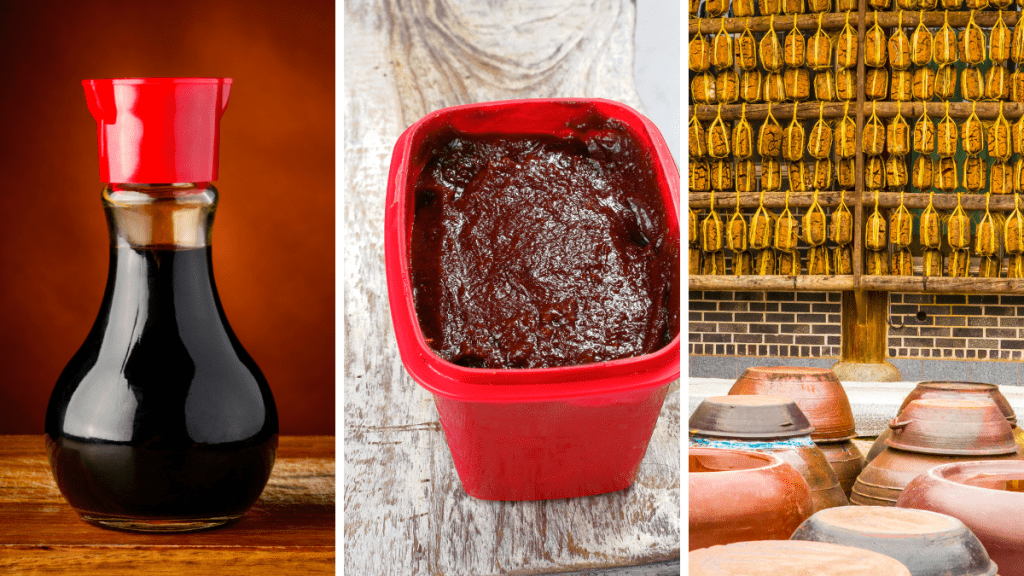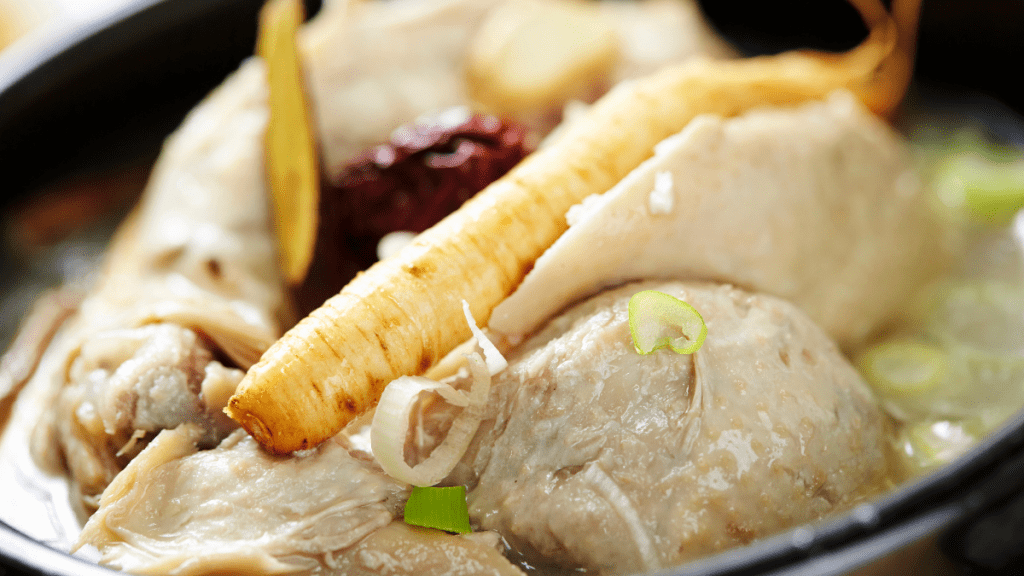
A Local Guide to Eating Gluten-Free in Korea
Struggling to navigate gluten-free life in South Korea? We’ve put together this Local Gluten-Free Guide for Korea to help you find solutions for eating out and eating at home. This guide will grow and change with time as resources and information become more readily available. Know that navigating a gluten-free life in South Korea will not be easy, but it can be done.
- The Reality of Gluten-Free Eating in Korea
- Process For Determining Potential Safe Korean Foods
- Research the Foundations of Korean Cooking
- Build Your Knowledge Base
- Communication with Restaurants & Cafes
- Be Careful with Brand and Chain Restaurants
- Navigating the Grocery Store for Gluten-Free Ingredients
- What Gluten-Free Articles Do We Need?
The Reality of Gluten-Free Eating in Korea
Eating gluten-free in South Korea can be quite challenging, especially since Celiac disease is not well-known, and many people are unfamiliar with the strictness needed to avoid gluten. However, don’t lose hope! With a little preparation, awareness, and key phrases, you can find plenty of delicious, gluten-free options that highlight the best of Korean cuisine. Let’s dive into what you need to know to eat gluten-free in Korea, whether you’re dining out or grocery shopping.
Process For Determining Potential Safe Korean Foods
Let’s explore the South of Seoul process for managing a gluten-free lifestyle in South Korea. We put this Local Gluten-Free Guide Korea together based on extensive interviews with international residents struggling to adapt to eating locally. We feel like we need to constantly clarify through our gluten-free information that this is a ‘process’ and it will not be simple or easy to navigate.
Know What You Are Up Against
You likely came to South Korea from a country that’s socially adapted to gluten allergies and gluten-free diets. However, the Korean culture has only begun this journey. Although the understanding of low-carb and gluten-free diets in Korea has evolved in recent years, largely influenced by global health trends and a growing focus on personal well-being, it remains limited as of 2024. Here’s how cultural awareness around these concepts continues to develop in Korea:
Rise of Low-Carb Diets (Keto Influence):
The low-carb or ketogenic (keto) diet only recently gained popularity in Korea as part of the global wave of interest in weight loss and metabolic health. The keto diet, which emphasizes low-carbohydrate intake and higher fat consumption, resonated with Koreans primarily because of its focus on controlling weight and reducing carbohydrates, particularly rice and other starches which are central to traditional Korean meals.
As a result, many Koreans became familiar with the idea of reducing carbs as part of a healthy lifestyle. This led to an increase in low-carb products and keto-friendly options in grocery stores and restaurants, including alternatives like cauliflower rice and low-carb snacks. The keto diet brought attention to food intolerances but focused primarily on carbohydrate intake rather than specific dietary allergies like gluten sensitivity.
Keep in mind that even though more low-card options exist than before, the number of options is far less than in Western countries. So don’t expect too much.
Gluten-Free Awareness Through Keto
Because the keto diet naturally limits grains (many of which contain gluten), Koreans began associating gluten-free with a low-carb lifestyle. The avoidance of foods like bread, noodles, and flour-based dishes became common among keto dieters, even though their primary goal was reducing carbs, not necessarily avoiding gluten due to health issues like Celiac disease or gluten sensitivity.
In this context, Koreans who are aware of gluten-free options may initially think about it as part of a carb-cutting strategy rather than a medical necessity. Therefore, gluten-free products in Korea are often marketed toward health-conscious consumers or those following keto or weight-loss diets, rather than explicitly for people with gluten allergies. Keep this in mind when looking for gluten-free restaurants and food items. You may have more luck searching for Keto.
Which leads us to directly talk about Celiac.
Limited Understanding of Gluten Allergies
While Celiac disease and gluten sensitivities are widely recognized in Western countries, awareness of these conditions in Korea remains relatively low. Korean food culture traditionally revolves around rice, which is naturally gluten-free, so gluten-related issues have not been as prominent in Korean society.
Most Koreans may not fully understand the severity of a gluten allergy or the need for strict gluten avoidance in certain medical conditions. Instead, gluten-free diets are more often viewed as a trendy or optional lifestyle choice rather than a medical requirement. Restaurants and food establishments may offer gluten-free options but are not always aware of cross-contamination risks or the need for strict adherence to gluten-free protocols for individuals with Celiac disease.
IMPORTANT: This means cross-contamination is a big issue. Assume that those preparing and storing gluten-free foods do not conceptually understand the potential for cross-contamination. This means attempts to clarify cross-contamination may now bring accurate answers. Keep your testing tools ready.
Korea’s Allergy Warning Requirements
As part of the change, restaurants may post allergy warnings. For example, food that is prepared on-site (such as in restaurants or cafes), and allergen information must be provided upon request. Many chain restaurants and large establishments include allergen charts or indicate allergens on menus, but smaller establishments may not always follow these guidelines strictly unless asked by the customer. Additionally, ready-to-eat meals sold in convenience stores and supermarkets (such as dosirak or instant meals) are subject to the same allergen labeling rules as packaged foods.
Since Korea uses Korean, you will need to use a language translation app to read the allergy information. Language translation apps like Papago have a camera feature that allows you to take pictures of signs and menus and translate the text.
Please notice that we previously stated that restaurants “may” post allergy warnings. We hedged this information because exceptions may exist. Certain small businesses, such as traditional markets or homemade goods sold by individuals, might be exempt from some of these labeling requirements. Be careful with small vendors, street vendors, etc.
Research the Foundations of Korean Cooking
Next, you need to understand the foundations of local food. South Korea’s traditional cuisine is largely based on rice, meat, fish, and vegetables, which can often be made gluten-free. If you know what hidden gluten-filled ingredients to look for, you can research recipes and clarify ingredients to find foods that meet your needs.
Hidden Gluten in Korean Dishes
In terms of Korean food, many dishes include hidden sources of gluten, such as:

- soy sauce
- chili paste (gochujang)
- and soybean paste (doenjang)
You need to be careful around side dishes especially. This means that recipe research and additional communication with restaurant staff may be crucial for your health and comfort.
Build Your Knowledge Base
Korean food We recommend researching ingredients for Korean dishes online so that you can assess which recipes most likely will not have gluten. Let’s start by using Samgyetang (삼계탕) as an example. Samgyetang is a non-spicy chicken soup stuffed with rice. The most common type of Samgyetang has a medicinal soup base that has roots, sticks, and other herbal contents. However, it doesn’t often have soy sauce. If you google gluten-free Korean foods you can also find Samgyetang (삼계탕) referenced.

Research the Most Common Ingredients
After you find a potential option like Samgyetang, research the common ingredients by reading different recipes online. Keep in mind, that recipes shared in English may not follow traditional Korean recipes as they have been adapted for Western grocery stores. We found that samgyetang generally includes:
- Whole young chicken: A small, tender chicken is used, often stuffed with ingredients.
- Ginseng: Fresh or dried Korean ginseng root is added for its medicinal and health benefits.
- Glutinous rice: The chicken is stuffed with sticky rice, which absorbs the broth’s flavor as it cooks.
- Jujube (Korean dates): Adds a slight sweetness and nutritional value to the soup.
- Garlic: Whole cloves are used to enhance the soup’s flavor.
- Gingko nuts: Optional, but sometimes added for a rich, nutty taste.
- Chestnuts: Occasionally used for added texture and sweetness.
- Herbs (such as perilla seeds or green onions): To garnish and add extra flavor.
Research Potential Variations in Ingredients
Since different regions and families have different samgyetang recipes, you need to know what unexpected ingredients could be added. For this, we asked ChatGPT to identify possible gluten ingredients used in samgyetang variations. This was the list it provided:
- Soy Sauce: Some variations may use soy sauce for added flavor, but traditional soy sauce typically contains wheat.
- Barley or Wheat Grains: Though glutinous rice is traditional, barley or wheat could be substituted or added in certain variations, which contain gluten.
- Seasoned Broth Bases: Some commercially available broths or bouillons used in Samgyetang may contain gluten, particularly if they use wheat-based additives or flavorings.
- Noodles: In some fusion or modern adaptations, noodles (such as Korean wheat noodles) might be added for texture.
- Marinades or Sauces: Some Samgyetang variations could incorporate pre-marinated chicken or additional sauces, which may use wheat-based thickeners.
As you can see, for anyone with gluten sensitivities or celiac disease, it’s important to check for these ingredients in non-traditional or restaurant versions of Samgyetang.
Join Local Online Communities
Don’t try to do all this research alone. The South of Seoul local Gluten-Free guide for Korea can only help so much. You need a community and plenty of Celiac and gluten-free people where you can share lived experiences in real life. Join a support group to learn from other’s experiences. Try Wheat and Gluten-Free in South Korea to get started.
Communication with Restaurants & Cafes
Armed with historical awareness and culinary research, use Phrases for Gluten-Free Dining along with the Local Gluten-Free Guide Korea to help you communicate with the restaurant staff. Use the phrases along with the following process to communicate your gluten-free needs with restaurants and cafes. Having a strong communication strategy will help you feel comfortable and successful.
Determine Level of Awareness
First, let them know you have a gluten allergy. Next, ask them if they know about gluten allergies. If they don’t, proceed with caution. You will need to double-check each part of the food. To do this, break the recipe down into its parts: 1) primary ingredients, 2) how they made the broth (premade or homemade), and 3) possible cross-contamination.
Clarify What They Make By Hand
If the restaurant does not make their broth and sauces by hand, ensuring a gluten-free experience becomes more tricky. The pre-made additives often contain some kind of gluten. In the past, we have gone so far as to ask to see the packaging to check for gluten.
Ask for Outside Communication Help
If you don’t feel comfortable with communication, reach out for help. For example, you can contact 1330 from your smartphone. You can call them or message them. They offer 24-hour / 7 days a week/ 365 days a year service supporting non-Korean speakers. They can speak Korean with the business owner to help explain your situation.
Keep in mind, that you also need to determine how much the person assisting you on the other end of the helpline knows about gluten intolerance.
Build Relationships
Once you have success, go back the the same places. Building relationships with restaurant owners who support you will be a rewarding experience for you both. Sometimes they might even make special side dishes just for you if they know you are coming. Relationships truly matter when living in a South Korea with a gluten allergy.
Use Gluten Test Kits
After you have done this work, also test your food for safety. Even if the restaurant carefully makes sure not to add gluten to the food, they often do not understand issues with cross-contamination.
Have a Backup Plan
Carry some snacks and safe foods with you. Please, don’t go out into the world in rural Korea without something to keep you going if things don’t work out. This is especially true when you first arrive in Korea. Set yourself up for success by always having a backup plan.
Eat at International Food Restaurants
If navigating gluten-free Korean food feels too stressful at times, you can turn to international food options. Such restaurants often speak English and may have gluten-free options on their menu. Since this localized guide for gluten-free living in Korea covers the whole country, it’s hard to provide a good list of places. However, the following ideas might inspire your searches.
Pizza with Rice Flour Dough
Imsil Cheese Pizza (임실치즈피자), a popular pizza chain across Korea, offers pizzas made with rice flour dough. This is a great option for gluten-free diners craving pizza.
- Phrase to use:
“쌀가루 도우로 피자 만들어 주세요.”
(Ssalg-aru douro pija mandeul-eo juseyo.)
Please make the pizza with rice flour dough.
Mexican Cuisine
Mexican restaurants may offer tacos made from corn tortillas, which are naturally gluten-free. Double-check the fillings to ensure they’re free from gluten-containing sauces.
Vietnamese Restaurants (베트남 음식점 or 베트남 레스토랑)
You can find excellent Vietnamese restaurants across South Korea. They often have solid options for gluten-free diets.
Indian and Nepalese Cuisine (인도 음식점 or 인도 레스토랑)
Many Indian and Nepalese restaurants in Korea serve gluten-free dishes like curries and rice-based meals. These restaurants are generally more familiar with dietary restrictions and are often willing to accommodate special requests.
Vegan and Gluten-free Restaurants (비건 음식점 or 비건 레스토랑)
Large cities like Soul have a variety of Western-style vegan restaurants that happily offer gluten-free options. For example, we love Plant Cafe in Seoul.
Searching for Options Use Korean
If you search in English, you will struggle to find options outside of Seoul of Busan. This is true even when you use English Naver Maps. Make sure to copy and paste the Korean search terms into Korean Naver maps. We provide Korean terms to help make this easier. Also, read the Phrases for Gluten-Free Dining in Korea for more help.
Be Careful with Brand and Chain Restaurants
When we eat with vegan, vegetarian, Halal, or gluten-free friends – we avoid brand and chain restaurants. Unless a brand officially labels the food gluten-free, be careful. Brands and chain restaurants use pre-made foods shipped from primary kitchens. The staff will not have a solid understanding of what does into the food. Additionally, brands use more additives and random gluten in their sauces and broths.
Navigating the Grocery Store for Gluten-Free Ingredients
Korea might not have reliable restaurants but we have excellent grocery shopping. Eating gluten-free at home is a snap. Rice is a staple in Korea, and you’ll find it in abundance. You can also find a variety of gluten-free noodles made from rice, sweet potato starch, and buckwheat (soba, make sure it’s 100% buckwheat and not mixed with wheat flour). Major supermarkets like Emart, Homeplus, and Lotte Mart may have dedicated sections for gluten-free or organic foods. This will depend on location.
Asian and World Marts also offer a variety of gluten-free ingredients. Some you might recognize and other might be all new. It’s worth visiting to see what you can find.
Online Shopping
Of course, Korea’s online shopping also helps. You can find gluten-free options on Coupang, GMarket, and iHerb. If you shop online you can even find gluten-free soy sauce and gochujang to make Korean food at home. With these ingredients, you don’t have to miss out on the delicious Korean food fun.

What Gluten-Free Articles Do We Need?
South of Seoul always wants to improve information. This local gluten-free guide for South Korea only touches the surface of information. Let us know what else we should document and share.

Founded in 2015, the South of Seoul team consists of volunteers on three continents working together to support English-speaking people traveling or living in South Korea. South of Seoul volunteers work with organizations and individuals across South Korea to improve equitable access to information across South Korea. Much of South of Seoul’s information focuses on Pyeongtaek, Gyeonggi-do, South Korea.
Blogs published under the authorship of “South of Seoul” include blogs compiled by multiple volunteers to improve access to standardized information unrelated to individualized personal experiences.





